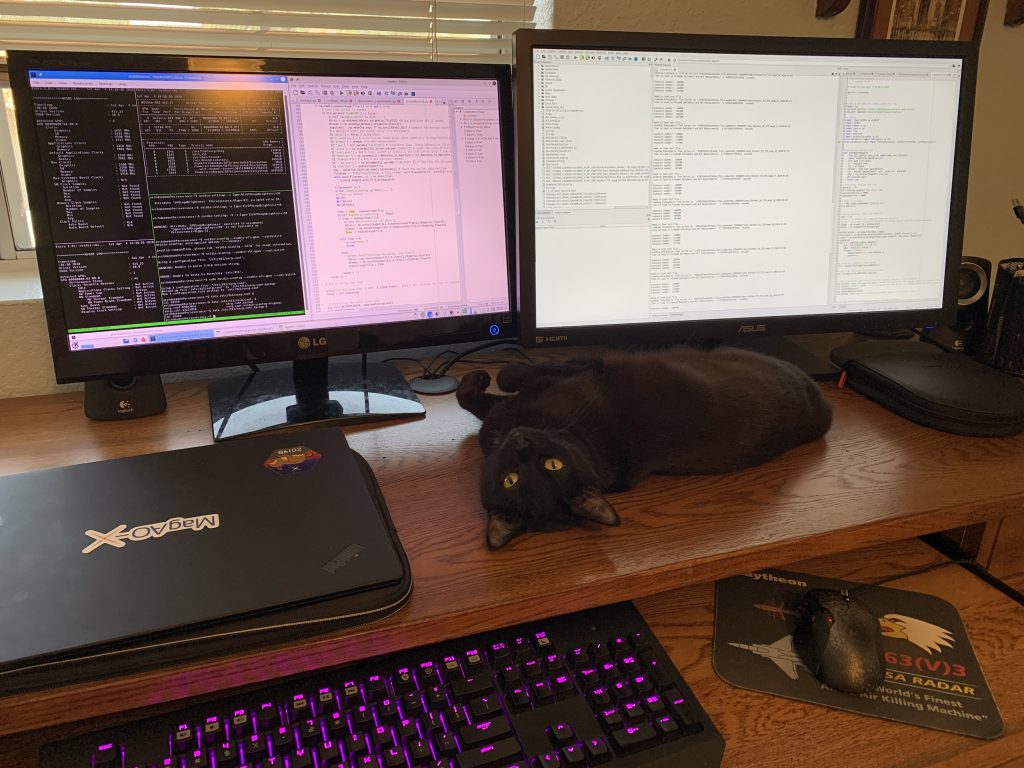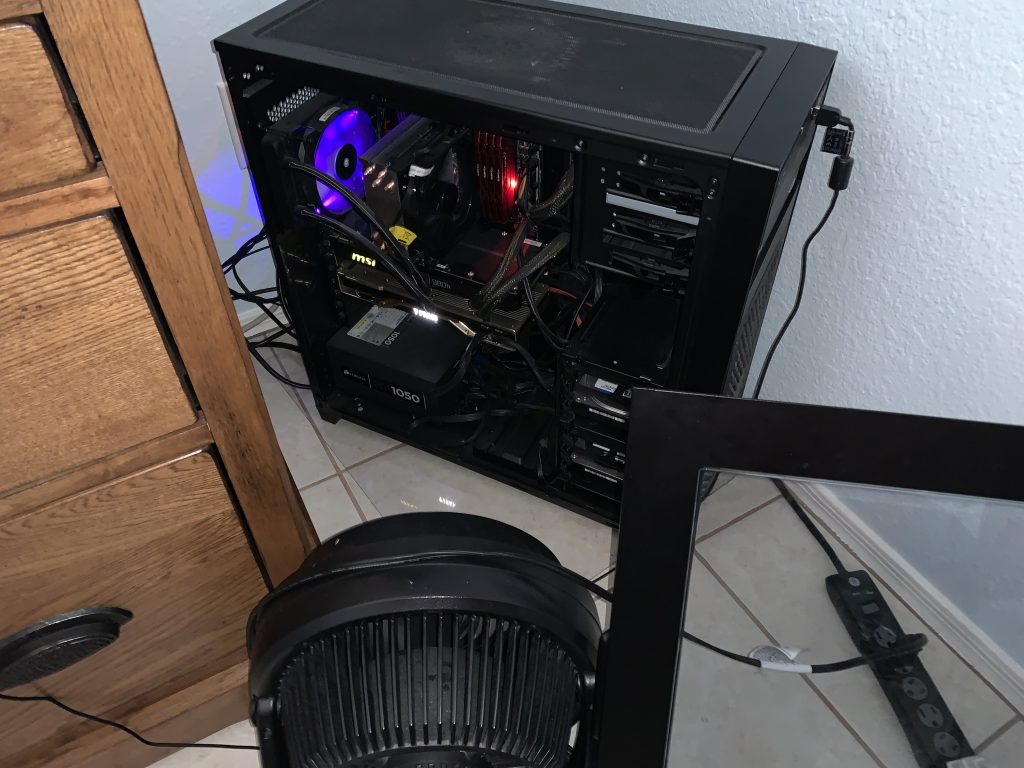Hello to all the wonderful blog readers out there. Although I am a long time member of the team, y’all don’t know me yet as this is my first post to the XWCL blog. So who am I? That’s a good question that I am still trying to figure out. But anyway…I (think I) am the only native Tucsonan in the team. So you may from time to time hear me talk about a Stravenue, or perhaps the latest “ganga” at a store. Or the dark days of Hidden Valley Inn (a restaurant that was amazing) closing, or Macayo’s leaving for the greener pastures of that place to the North. I don’t often agree with the Urban Dictionary definition of things, but I think they got Tucsonan right:
3. A Kind gentlemen who wears; big hats, shorts, beards, and yes flip-flops. They often study Science, Art, or Architecture. They may be spotted wearing a University of Arizona t-shirt or a NASA t-shirt.
I mean that pretty much sums me up. Except for the flip flops. That only happens around the neighborhood…
So what has kept me here for the last nearly 30 years? Aside from the good food, relaxed culture (so long as you happen to not be driving behind a snowbird for the 10th time in a day), and the never ending hope that at some point soon one of the statewide sports teams (of any level of amateur- or professional-ism) won’t be terrible, I have always had a few interests that are well supported by this desert outpost. From as far back as I can remember, having grown up in a home that supports both Star Wars and Star Trek (I am much more on the Star Wars side, to put it mildly), I would wander out into the backyard at night and look up at the stars and be amazed at all that was out there. As I aged, the thoughts changed. “Wow that is cool. Lot’s of Twinkles.” “I wonder why they Twinkle” “Is that a planet?” “Is that a galaxy?” “I wonder if some creature somewhere is out in their yard right now looking up at a point of light that is the Sun and wondering if something is in their yard looking back at it”. I know what you are thinking, blog readers. That those questions seem to fit really well with the science that is we talk about in this blog a lot, so that must be why I am here, at the UofA (I will not apologize for not using UArizona…..It will never happen. Ever.), working on a PhD in optical sciences applied to astronomy. Well, it isn’t.
Nope. I stayed here and went to the UofA for optics because when I was a high schooler, I broke a portable CD player (old man alert) so that it would play music without the lid closed. I sat there watching nothing touch the disc, and yet music played, and couldn’t understand the magic that had suddenly been thrust into my life. After a trip to the local library (wow another old man alert) to learn about something called optical data storage, I felt I knew the direction my life would go. It even turned out that the university down the street had a world renown program in just such a thing!
So now how did I actually end up here. Writing this blog post for something much better aligned to my childhood dreams than my adolescent life plan. Well it’s a pretty short story, so I will tell it. One semester of undergrad, I was in need of 3 more units to maintain my scholarship funding. Having taken a few gen ed astronomy classes to fulfill requirements to graduate, I decided it would be interesting to take one through the Optical Sciences department. It turned out to be quite interesting and unlike any class I had taken. No homework. No written exams. Just 3 team projects and an oral exam final (Olivier if you are reading this, I still remember what a blazed grating is because you made me derive the equations for you in that final exam). Throughout the class, it became clear to me that I cared more about the team projects and what I was learning than I did about anything in any of the numerous classes I had taken relating to photonics, and my mind was starting to change on my direction. Then came “the incident.” It turned out that the entire class was interested in working on the same idea for the third project. There was some disagreement between parties on how things should go. A certain “man who must not be named” on one side, and fellow blog poster (before she was even a master, let alone a Dr.) Kelsey Miller on the other. And although for the next five or six years Kelsey would claim I was on the other side, I really was on hers. And I think the fact that I enjoyed working with her especially, and Olivier Guyon the professor too, enough to apply for an undergraduate NASA fellowship (and luckily get it!) to work with them immediately following the conclusion of the class is evidence enough. If not, then immortalizing it here in the blog sure is, right?? So that’s it. I am here because I had to take another class to keep the money paying for me to be in school, met Kelsey in it, and found a path to reach for what I dreamed as a child.
That’s probably enough about my past for now. In the present, I am working on a new algorithm that doesn’t yet seem to have an official mathematics name, so I will just call it the Joint Real-time Estimation of NCPA (non-common path aberration) and Exoplanet Imaging algorithm. I have also taken to referring to it by the name of its creator, Dr. Richard Frazin, but as he is a collaborator on all my work, it doesn’t seem right to make it seem as though he named it after himself. Essentially, it is a statistical framework in which all the information that can be gathered from MagAO-X or any system (ms WFS data synced with Science camera images, System models of the WFS and coronagraph, and knowledge of the statistics of the Adaptive Optics Residual phases) is brought together to construct a regression to solve for the stuff we want to know, like any NCPA that is present, or for that matter any exoplanet that might be hiding under all the speckles. It can be thought of as using each AO Residual as a probe, meaning in just 16.67 minutes you have already gathered 1 million probes to set up the system of equations. However, one, at least in the time of writing this post, can never know the true AO Residual. One can only know what the limited spatial bandwidth and noise content of the WFS can tell you about it. So in addition to figuring out all the unknowns we want, we also have to account for terrible bias in the estimator caused by this imperfect knowledge. I think I will spare the readers that have already trudged on this far from any more detail than that though. Luckily, with all my work being done on a computer for the time being, being trapped at home is of little disruption to my work life.
Picture Time (perhaps more in the coming days…things didn’t go well with my camera tonight trying to snap an inspiring image of the ISS flying overhead)


Song of the Day
Finally, one more story that will lead to my choices for song of the day. One thing I like to spend some of my down time doing is reading about, as Bernard of Chartres would say well before Isaac Newton said it, the giants whose shoulders I stand upon. About a year or so ago, when I was reading about the life of Richard Feynman (which I highly recommend; he has many interesting stories to tell), I came across a story I had never heard before. That of his so called last journey, that started when he once asked his friend Ralph Leighton, “What ever happened to Tannu Tuva?” Now I never read Ralph’s book on the subject (Tuva or Bust!), but as I understand it, Feynman spent roughly the last decade of his life attempting to get a visa to visit this small region of southern Siberia, near Mongolia, to serve as an allegory of sorts on always having curiosity. Unfortunately, he ended up passing away before he ever made it, but his daughter was able to go there in 2009. So to honor his purpose, I followed my curiosity as to why Feynman would have chosen this particular corner of a vast world, and started to look into what made Tuva unique. It turns out that they are the keepers of a unique form of music, known generally as Khoomei (although there are many styles that get separate names), but known better in the West as throat or overtone singing. After a dive into the YouTube machine, I found an old Tedx “talk” of a group known as The Alash Ensemble performing this type of music in Baltimore, and I was truly astounded by it. It was the same feeling of witnessing some magical thing as when I broke the CD player. Like here was a simple way to reconnect to not only what it means to be human, but to feel the sort of raw ancestral power of nature that I never knew before was a thing. Without going much further, this music has become a larger piece of my life, especially in these turbulent times, as a means to find balance with myself and nature in a sort of musical form of mediation, both through listening to and singing it myself (who knows, maybe someday the local team will someday get to hear me attempt to do it).
So although it is likely quite different than previous Song of the Day choices, I present, with the hope that maybe one of you readers out there that stuck through the telling of some of my life story will find the same connection with nature I did, that same Tedx talk that I found a year ago, and then to perhaps better connect to an “Astronomical” topic, a second, more modern interpretation of this kind of music by a band that went viral awhile back for a different song named the Hu Band, performing a song they wrote for Star Wars: Jedi Fallen Order. (see? I told you I was a Star Wars nerd. And also a throat singing nerd. So this was like a mind blown moment when I came across it in Star Wars canon)